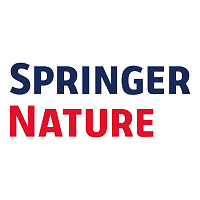Background Based on its high resolution in soft tissue, MRI, especially diffusion-weighted imaging (DWI), is increasingly important in the evaluation of cholesteatoma. The purpose of this study was to evaluate the role of the 2D turbo gradient- and spin-echo (TGSE) diffusion-weighted (DW) pulse sequence with the BLADE trajectory technique in the diagnosis of cholesteatoma at 3 T and to qualitatively and quantitatively compare image quality between the TGSE BLADE and RESOLVE methods. Method A total of 42 patients (23 males, 19 females; age range, 7-65 years; mean, 40.1 years) with surgically confirmed cholesteatoma in the middle ear were enrolled in this study. All patients underwent DWI (both a prototype TGSE BLADE DWI sequence and the RESOLVE DWI sequence) using a 3-T scanner with a 64-channel brain coil. Qualitative imaging parameters (imaging sharpness, geometric distortion, ghosting artifacts, and overall imaging quality) and quantitative imaging parameters (apparent diffusion coefficient [ADC], signal-to-noise ratio [SNR], contrast, and contrast-to-noise ratio [CNR]) were assessed for the two diffusion acquisition techniques by two independent radiologists. Result A comparison of qualitative scores indicated that TGSE BLADE DWI produced less geometric distortion, fewer ghosting artifacts (P < 0.001) and higher image quality (P < 0.001) than were observed for RESOLVE DWI. A comparison of the evaluated quantitative image parameters between TGSE and RESOLVE showed that TGSE BLADE DWI produced a significantly lower SNR (P < 0.001) and higher parameter values (both contrast and CNR (P < 0.001)) than were found for RESOLVE DWI. The ADC (P < 0.001) was significantly lower for TGSE BLADE DWI (0.763 x 10(- 3) mm(2)/s) than RESOLVE DWI (0.928 x 10(- 3) mm(2)/s). Conclusion Compared with RESOLVE DWI, TGSE BLADE DWI significantly improved the image quality of cholesteatoma by reducing magnetic sensitive artifacts, distortion, and blurring. TGSE BLADE DWI is more valuable than RESOLVE DWI for the diagnosis of small-sized (2 mm) cholesteatoma lesions. However, TGSE BLADE DWI also has some disadvantages: the whole image intensity is slightly low, so that the anatomical details of the air-bone interface are not shown well, and this shortcoming should be improved in the future.

Performance of TGSE BLADE DWI compared with RESOLVE DWI in the diagnosis of cholesteatoma
Review badges
0 pre-pub reviews
0 post-pub reviews

